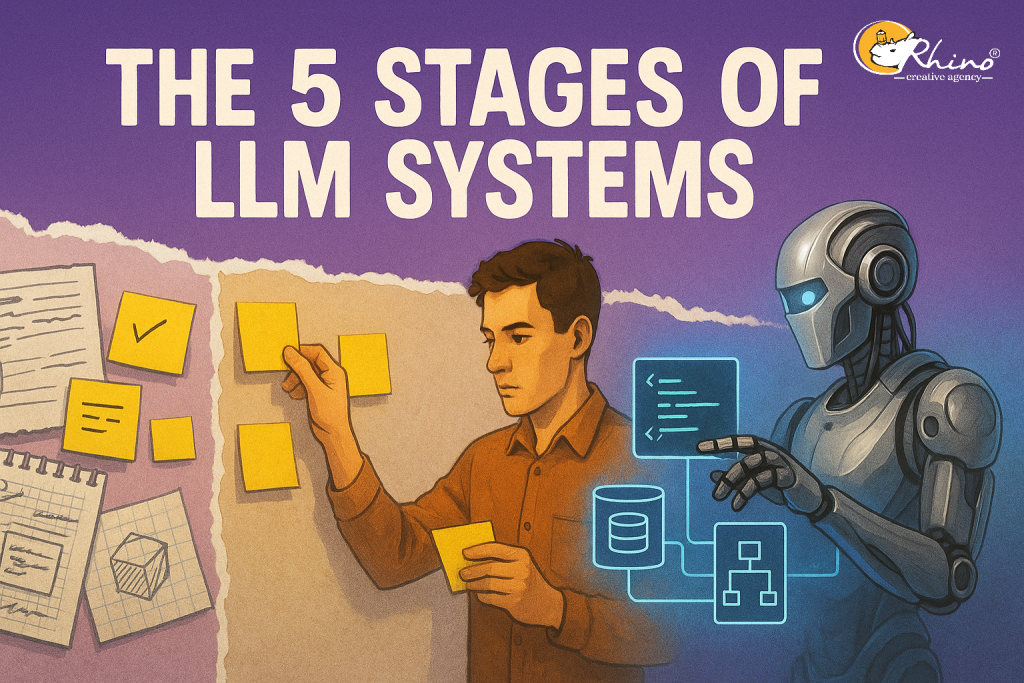Let’s be honest: the journey looks almost the same for everyone. At first, you open ChatGPT and think: “Wow, this is magic!” A couple of lines of text and suddenly you’ve got code, a marketing blurb, or even a recipe suggestion.
Then comes the next stage. The magic slowly turns into chaos. Prompts get longer, workarounds pile up, you start chaining calls together-and one day you realize: “Okay, I’m spending more time explaining to the model what I need than actually doing the task itself.”
The third stage is where things finally get interesting. That’s when you realize the chaos needs taming, and you start thinking like an engineer. Not as someone tinkering with a toy, but as an architect who’s building a system.
So let me ask you: where are you right now on this maturity curve? Still playing around with prompts? Stuck in endless spaghetti chains? Or maybe standing right at the edge of something bigger?
In this article, I want to walk you through a simple maturity model for LLM systems-a journey from quick experiments to full-fledged architecture, where agents work together like a well-oiled team. And yes, at the top level we’ll talk about something I call AAC (Agent Action Chains)-an approach that helps finally break free from the chaos. But before we get there, let’s take an honest look at how most projects evolve.
Right now, LLM systems don’t have a standard growth path. Every developer or team takes their own route, trying out hacks, inventing their own approaches. On paper, that sounds like freedom and creativity. In reality, it often turns into chaos.
Look around: some projects stall at the “just add another prompt and it’ll work” stage. Others build long chains of calls that look nice on a diagram but collapse under the first real load. And then there are the no-code maps that spiral into a nightmare of a hundred blocks connected in every direction. On demo day, it still looks alive. But as soon as it hits production, nothing scales, nothing is tracked, and nobody can even tell where things broke.
These aren’t isolated cases-they’re a pattern. Dozens of teams and startups end up wasting months walking the same trial-and-error path, reinventing the same wheel again and again.
That’s where a maturity model comes in. It gives you a simple map: where you are now, and what needs to change to move forward. Other fields went through this before. Agile maturity models helped companies figure out whether they were truly agile-or just renaming tasks as “sprints.” DevOps maturity did the same for release processes, showing how automated and repeatable they really were.
LLM systems are at the same turning point today. The hype is massive, but the maturity is almost zero. Without a shared model of progress, we’ll just keep drowning in chaotic prompts and spaghetti systems.
At this stage, people start “casting spells” with text. A single query isn’t enough anymore-so you get long prompts with role instructions, detailed steps, and even mini-scenarios baked in. Sometimes it feels less like writing a prompt and more like coding a tiny program in English.
Signs.
You start to feel the “magic of wording”: change one phrase and the model spits out something completely different. Some people even build prompt libraries, but underneath, it’s still just one big monolith.
Risks.
As complexity grows, the prompt turns into a monster that can’t be maintained. Adding a new step often means rewriting everything. Testing is painful. Scaling this approach? Nearly impossible.
When it makes sense.
Complex prompts are still useful in the right context: quick MVPs, marketing use cases, or research projects. Sometimes they deliver an impressive result “here and now.” But long-term, they don’t hold up-this is a temporary crutch, not a real foundation.

